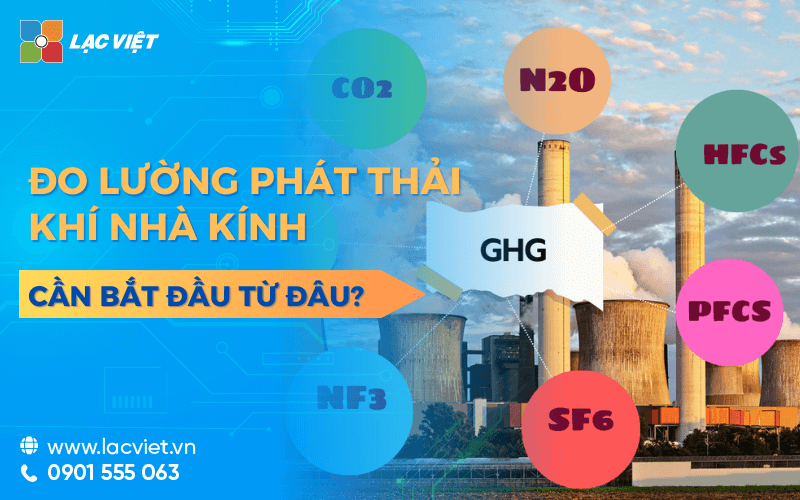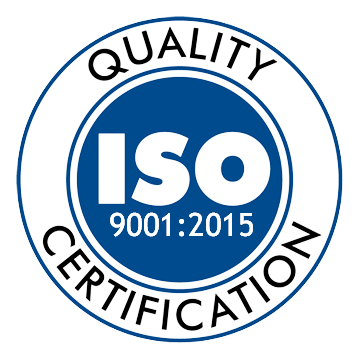Climate change is no longer a problem far which is a direct impact on the living environment, economy and society. The phenomena such as floods, drought, heat extremes is no longer rare, which became the permanent threat for every country, industry. In that context, greenhouse gas emissions is considered the main cause accelerate the process of global warming, put out urgent requirement for the organizations and businesses to take action.
However, instead consider the cut greenhouse gas is a challenge, many businesses worldwide have turned it into growth dynamics, empowering brands and optimize business operations. The leading corporations such as Google, Microsoft, Unilever has not just committed to Net Zero, but also leverage the strategy to reduce emissions to create competitive advantage.
So greenhouse gas emissions is nothing working? Business need to do to reduce emissions according to the route Net Zero by 2050? This article Lac Viet Computing will help organizations understand the nature of greenhouse gases, the challenges businesses are facing and effective solutions to reduce emissions in a sustainable way.
1. Greenhouse gas emissions, what is?
1.1. Definition of greenhouse gas emissions
Greenhouse gas emissions (GHG – Greenhouse Gas) is the type of gas has the ability to hold heat in the atmosphere, do cause the greenhouse effect increases the global temperature. The gas exists in the atmosphere with long time cause imbalances temperature on Earth lead to climate change.
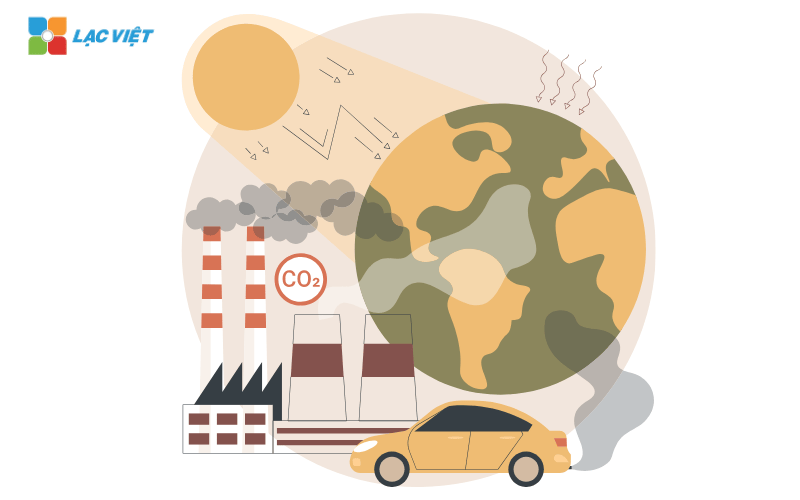
The excessive increase of greenhouse gases mainly derived from the human activities such as burning fossil fuels, industrial development, agriculture, deforestation. The research from Intergovernmental committee on Climate change (IPCC) has confirmed that the level of CO₂ in the atmosphere today far exceeds the historical average, causes more severe impact to the environment and ecosystem.
Distinguish greenhouse gases and natural gas greenhouse artificial:
- Greenhouse gas nature: naturally occurring in the atmosphere helps to maintain stable temperature on Earth. For example: water Vapor (H₂O), CO₂ from the carbon cycle naturally.
- Greenhouse gas artificial: Born from industrial activity, transportation, manufacturing, agriculture. These gases is increasing due to human cause weight loss by climate.
1.2. The range in the measurement of greenhouse gas emissions according to the GHG Protocol
To help businesses assess, manage greenhouse gas emissions, GHG Protocol (Greenhouse Gas Protocol) 've divides emissions into three scopes (Scope 1, Scope 2, Scope 3).
Scope 1 – direct emission or from the operation of the business
Include all sources of emissions of CO₂, CH₄, N₂O from the operation of the business of direct ownership or control.
For example:
- Emissions from the boiler and engine in the factory.
- Emissions from trucks, cargo owned business.
- Chemical process in the production of cement, steel, chemicals.
Scope 2 – emissions indirectly from energy consumption
Arising from electric, steam, hot water that business buyers from outside.
For example:
- Emissions of CO₂ from the use of the national power grid.
- Emissions from energy used in heating, cooling, ventilation.
Scope 3 – emissions indirectly from the supply chain and products
Is the type of emissions indirectly from the activities in the supply chain that businesses do not directly control.
For example:
- Emissions from material production due to the supplier provides.
- Shipping of goods from suppliers to factory, from factory to customer.
- Emissions from the use of products after selling out of the market (for example, the power consumption of the electronic device).
- Emissions from travel, work, waste disposal, post-production.
1.3. Formula for calculating the amount of greenhouse gas emissions
The amount of greenhouse gas emissions can be calculated using the formula:
Emissions CO₂ (ton) = Active consumption × emission factors
In which:
- Operation consumption: the Amount of fuel, electricity, water, raw materials used in production.
- The emission: to Be determined according to the guidelines of the IPCC (the intergovernmental panel on Climate change).
Practical example:
A business use 1 million kWh of electricity per year and this power can the emission of 0.4 kg CO₂/kWh.
Emissions Scope 2 will be calculated as follows:
1.000.000 kWh × 0.4 kg CO₂/kWh = 400.000 kg CO₂ (400 tons of CO₂/year)
The accurate measurement helps business identify the sources of emissions, the largest, thereby making the solution minimize the effect.
2. The type of greenhouse gas emissions popular
There are many types of greenhouse gases with the level of influence different to climate change. Here are the main gases along with sources:
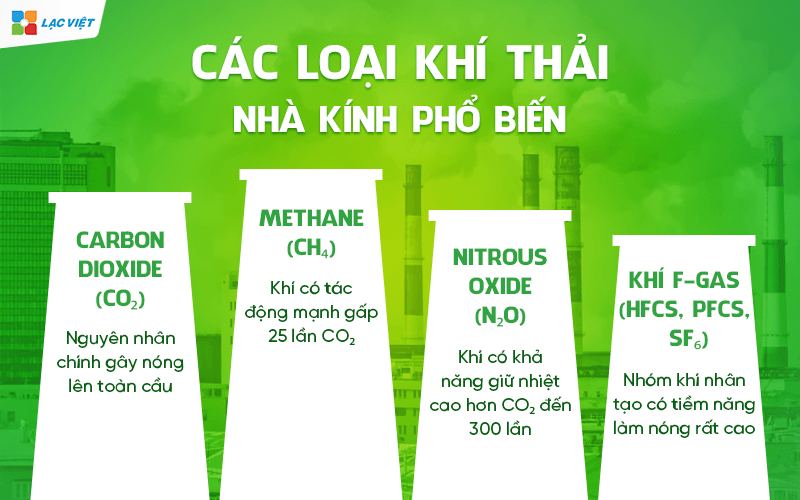
2.1. Carbon Dioxide (CO₂) – main cause global warming
Percentage contribution to the greenhouse effect: Accounted for more than 76% of the total amount of greenhouse gas emissions globally.
Sources:
- Burning fossil fuels (coal, oil, gas) in industrial production and transportation.
- Deforestation reduces the ability to absorb CO₂ naturally.
- The production process of cement, steel, chemicals.
2.2. Methane (CH₄) – Air-impact 25 times CO₂
Percentage contribution to the greenhouse effect: About 16% of the total emissions of GHG.
Sources:
- Livestock (fermented animal intestines born CH₄).
- Rice water arising methane from anaerobic environment.
- Organic waste decomposes in a landfill.
- Oil and gas extraction and coal mines.
2.3. Nitrous Oxide (N₂O) – Gas has the ability to keep the heat higher CO₂ to 300 times
Percentage contribution to the greenhouse effect: About 6% of the total emissions of GHG.
Sources:
- Use chemical fertilizers in agriculture.
- The process of fuel combustion in industrial, transportation.
- The process of wastewater treatment.
2.4. Gas F-Gas (HFCs, PFCs, SF₆) – Group artificial gas has the potential to be hot very high
Percentage contribution to the greenhouse effect: Under 2%, but the impact is more potent than CO₂ thousands of times.
Sources:
- HFCs (Hydrofluorocarbons): Used in refrigeration systems, air conditioning.
- PFCs (Perfluorocarbons): appeared in the electronics industry, production of aluminum.
- SF₆ (Sulfur hexafluoride): Use in insulated electrical equipment, impact stronger than 23.500 times CO₂.
Despite the small percentage of the group gas F-Gas has a heating capacity of global very high, exist in the atmosphere hundreds to thousands of years, causing long-term risks for the environment.
3. Causes greenhouse gas emissions
The greenhouse gas emission mainly comes from the production activities, business, human consumption. Four areas largest contributor to greenhouse gas emissions globally, including manufacturing industry, agriculture, breeding, transportation, change the purpose of land use. Understanding each emission source will help construction business solutions tailored cut with a roadmap to Net Zero by 2050.
3.1. Industry and production – the Source of emissions CO₂ largest
The burning of fossil fuels in industrial
- The industry is now the source of emissions CO₂ largest, accounting for about 24% of total global emissions.
- The manufacturing industry cement, steel, chemical, mining consumes large volumes of coal, oil, gas, creating energy CO₂ giant.
Practical example:
- Cement production is one of the sources of emissions CO₂ largest. The process of calcination of limestone to make clinker (the main component of cement) emissions 900 kg CO₂ per ton of clinker produced.
- Steel production in blast furnaces traditional discharged to 1.8 tons of CO₂ per ton of steel.
Pollution from coal power plants, thermal power, gas
- The energy sector is still heavily dependent on fossil fuels, especially coal and natural gas.
- Coal thermal power plant emissions CO₂ doubled compared with plants that run on natural gas 20 times more than renewable energy.
Actual figures:
- China, Usa, India are The three countries that have emissions from the largest industrial sector, mainly due to use of coal to produce electricity.
- A coal thermal power plant, medium discharged 900 g CO₂/kWh of electricity, while solar power only waste 50 g CO₂/kWh.
3.2. Agriculture and livestock – Source emissions CH₄, N₂O main
Agriculture is the source of emissions of methane (CH₄) and nitrous oxide (N₂O), the largest, accounting for about 19% of total global emissions. What kind of gas has an impact on the greenhouse effect much stronger than CO₂.
Emission CH₄ from livestock
- Livestock (cows, sheep) is the emission source CH₄ largest due to the fermentation of the intestines of ruminants.
- 1 cow can emit 100-200 liters of CH₄/day, equivalent to 2.5 tonnes CO₂ per year.
Emission N₂O from use of chemical fertilizers
- Nitrogen fertilizer synthesis when used on the field will be decomposed into N₂O.
- The impact of N₂O stronger than 300 times CO₂, exist in the atmosphere up to 100 years.
Practical example:
- One hectare of rice field water emissions of approximately 4,000 kg of CO₂ per year.
- Vietnam is one of five countries with the amount of methane emissions from agricultural highest in the world.
3.3. Transportation – Causes increase in CO₂ due to consumption of fossil fuels
The transportation industry is responsible for about 15% of the total greenhouse gas emissions globally, mainly from burning fuel oil, diesel, gasoline in vehicles.
Cars, trucks, buses – Source emissions CO₂ largest
- Car internal combustion engine using gasoline, diesel oil is the main cause of emissions of CO₂ in traffic.
- 1 liter of gasoline discharged approximately 2.3 kg CO₂, while 1 liter of diesel exhaust out about 2.7 kg CO₂.
Airline and sea shipping – The industry's emissions, but little is control
- Commercial aircraft emissions of about 90kg CO₂/passenger per 1,000 km flight.
- The shipping industry emits about 940 million tons of CO₂ per year, accounting for nearly 3% of total global emissions.
3.4. Deforestation change the purpose of land use – what Causes imbalance absorb CO₂
The forest is “hot absorbs carbon nature,” helps to absorb about 30% of the CO₂ that human emissions. However, deforestation to grab arable land, urban development is reducing the ability to absorb CO₂ of nature.
Deforestation reduces the ability to absorb CO₂
- Each year, the world lost about 10 million hectares of forest, equivalent to the area of south Korea.
- The Amazon has lost more than 20% of the area of deforestation to plant soybeans, livestock.
Conversion of forest land to agricultural land, urban causing increased emissions
- When the forest is destroyed, the carbon stored in the tree will be freed of CO₂.
- The process of building urban infrastructure consume more raw materials have high emission, such as cement, steel.
4. The impact of greenhouse gas emissions to the environment – economic
Greenhouse gas emissions not only directly affect the climate, but also caused a series serious impact on the ecosystem, economy, human life. The control of emissions reduction is responsible for the environment but also are important factors in the sustainable development strategy of enterprises, national.
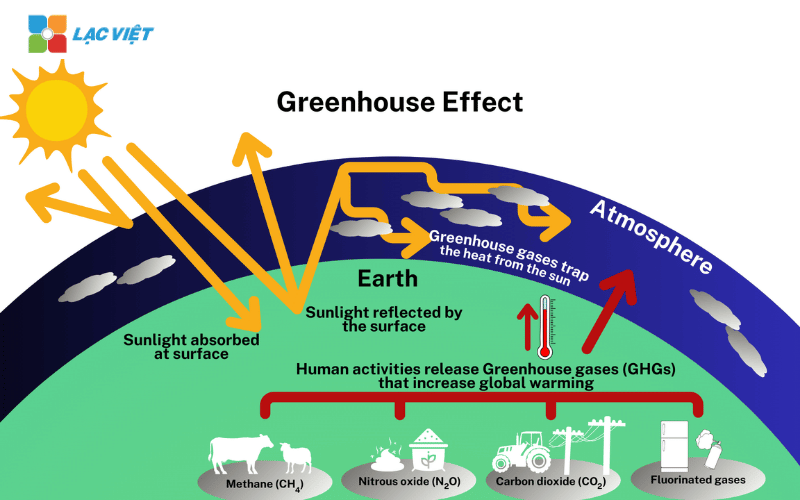
4.1. Climate change, greenhouse effect
The increase in the concentration of greenhouse gases in the atmosphere has been accelerating the process of the greenhouse effect, leading to global warming. This entailed the impact alarming follows:
Increase in global temperature
- IPCC report shows the average temperature worldwide has increased by more than 1.1°C since the pre-industrial era, with forecasts can be increased by 2-3°C by the end of this century if no measures to cut emissions strong.
- Summer of record heat, a prolonged heat wave over, causing serious effects to human health and ecosystems.
Melting polar ice caps to sea level rise
- Ice at the North Pole – South Pole are melting with fast speed, unmatched, making the sea level rose about 3.3 mm/year according to the data of NASA.
- If this trend continues, many of the coastal cities as varied as Bangkok, Jakarta, New York CITY. Ho Chi Minh city may be submerged at the end of this century.
Is extreme weather
- Drought, hurricanes, floods, forest fires occur with a frequency higher level of destruction over.
Practical example:
- Forest fire severity in the Australian year of 2019-2020 has burned more than 186.000 km2, killing millions of wild animals.
- Hurricane Katrina in 2005, causing damage over 125 billion, making more than 1,800 people were killed.
4.2. Affect ecosystem biodiversity
The increase in global temperature, climate change has caused serious consequences for the ecosystem, threatening the lives of millions of species of living organisms.
Ruin, forest, land degradation, desertification
- Loss of tropical forests reduces the ability to absorb CO₂ of Earth, causing the carbon cycle imbalance.
- Land degradation due to erosion, drought, farming is not sustainable.
- Practical example: the area of the Amazon forest devastated has increased more than 17% of the total area of forest lost source absorb CO₂ important.
Ocean acidification, marine ecosystem
- About 30% of CO₂ emissions from human activities is absorbed into the ocean, lowering the pH of sea water.
- Ocean acidification degrade coral reef ecosystems, threatening food source of more than 3 billion people around the world.
4.3. The economic impact and food security
Climate change due to greenhouse gas emissions affect the environment, causing economic damage, serious, disrupting supply chains and threatening food security.
Increased energy costs due to the carbon tax, global
- Many countries are applying the carbon tax to encourage businesses to cut emissions.
- Practical example: the EU has applied adjustment mechanisms Border Carbon (CBAM), forcing exporters to Europe to report and pay fees for the amount of CO₂ emissions in production.
Reduced agricultural productivity, threatening food security
- Rising temperatures alter the growth cycle of the plants, reducing yield harvest.
- Drought, flood, epidemic, affecting supply chains, the global food.
- Practical example: India – one of the country produces wheat, the world's largest – was faced with loss severe season due to prolonged heat in the year 2022.
5. The standard policies to reduce greenhouse gas emissions
In order to control greenhouse gas emissions, promote action to reduce emissions, international organizations and the government of the country has set many standards, policies important.
5.1. The agreement Paris and committed to Net Zero by 2050
Agreement in Paris in 2015 is an important milestone in efforts to combat climate change, with the goal of keeping the global temperature increase does not exceed 1.5°C compared to pre-industrial era.
Commit to reduce emissions of the country
- More than 190 participating countries pledged to cut emissions, according to the contribution due to National self-determination (NDCs – Nationally Determined Contributions).
- Many countries set a target of Net Zero by 2050, which the EU committed to reduce at least 55% of emissions by 2030.
Requires enterprises to reduce emissions, energy use, clean, large companies are switching to renewable energy 100% and set a goal to be carbon neutral.
5.2. Adjustment mechanisms border carbon (CBAM) of the EU
CBAM is a policy, a carbon tax is on the EU to adopt to reduce emissions from imports into Europe.
Business directory need to comply with the standard emission
- Products such as cement, aluminum, iron and steel, fertilizer, power must bear the costs of carbon if emission exceeds the permitted threshold.
- Businesses need to invest in green technology to maintain competitiveness.
5.3. Credit system carbon and the carbon market global
Businesses can buy and sell credits carbon to offset emissions. If the business can't cut the whole emissions, they can buy credits carbon to offset emissions rest.
The program credit only carbon in the world
- ETS (EU Emission Trading System): System trading emissions the world's largest.
- VCS (Verified Carbon Standard): Program, credits carbon credits for business.
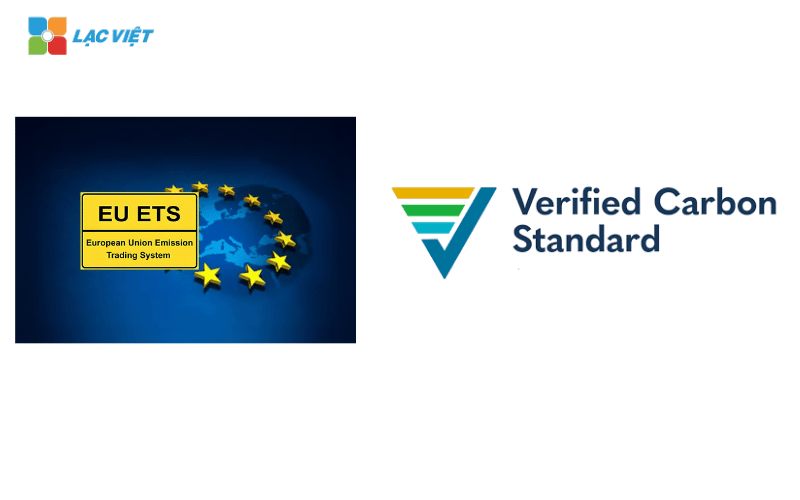
6. Solution to reduce greenhouse gas emissions for businesses
Reducing greenhouse gas emissions is a mandatory requirement for businesses to ensure compliance with the international standards, enhance competitiveness towards the goal of Net Zero by 2050. Below are the specific solutions that businesses can apply to optimize operations, reduce emissions, to contribute to sustainable development.
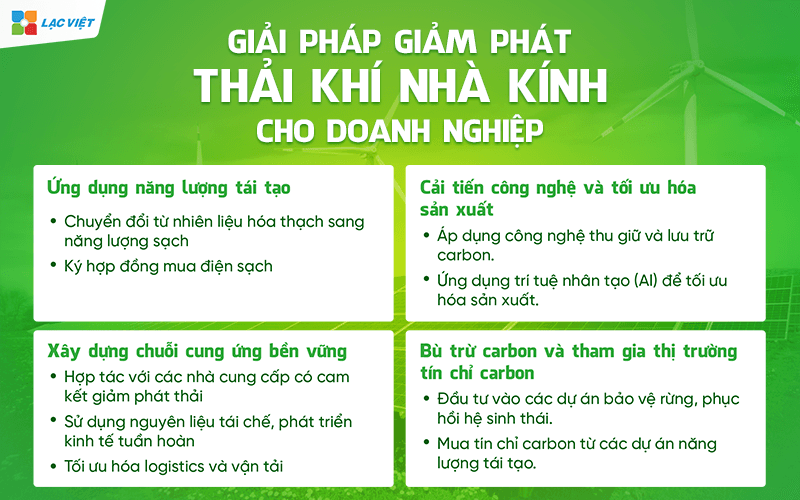
6.1. Application of renewable energy
Switching from fossil fuels to clean energy
- Use of renewable energy such as solar power, wind power, hydro power to replace coal, oil and gas in production runs.
- Deployment system, battery energy storage (battery storage system) to optimize the use of clean energy.
- Business can system installation, solar power attic or buy clean power from the grid to reduce emissions Scope 2.
Contract buy clean power (Power Purchase Agreement – PPA)
Contract PPA allows businesses to buy clean power from producers of renewable energy, without investing directly in infrastructure, power production. Help business stability energy costs in the long term and ensure power supply sustainable.
Actual deployment
- Google, Amazon, Microsoft has committed to using 100% renewable energy in operation.
- Many businesses in Vietnam such as Vinamilk, Nestlé Vietnam has also been converted to use solar power attic to minimize emissions CO₂.
6.2. Improved technology and optimizing production
Applied technology for capturing carbon storage (CCS – Carbon Capture and Storage)
- Technology CCS help capturing CO₂ emissions from industrial plants, preventing the direct discharge into the atmosphere.
- CO₂ may be stored in underground or reused in the manufacturing process other as concrete production carbon pussy.
- The advanced nations such as Norway, Canada is implementing CCS on a large scale to reduce emissions from heavy industry.
App artificial intelligence (AI) to optimize production
- AI and IoT (Internet of Things) can help businesses monitor energy consumption, optimize operational processes.
- For example: WHO can forecast energy demand, adjust heating/cooling, optimizing the production cycle to reduce fuel consumption.
Actual deployment
- Siemens, Schneider Electric is applying AI to optimize performance, production, help businesses reduce to 30% power consumption.
- Tesla, using AI in the production of electric cars, which saves costs and significantly cut emissions in the supply chain.
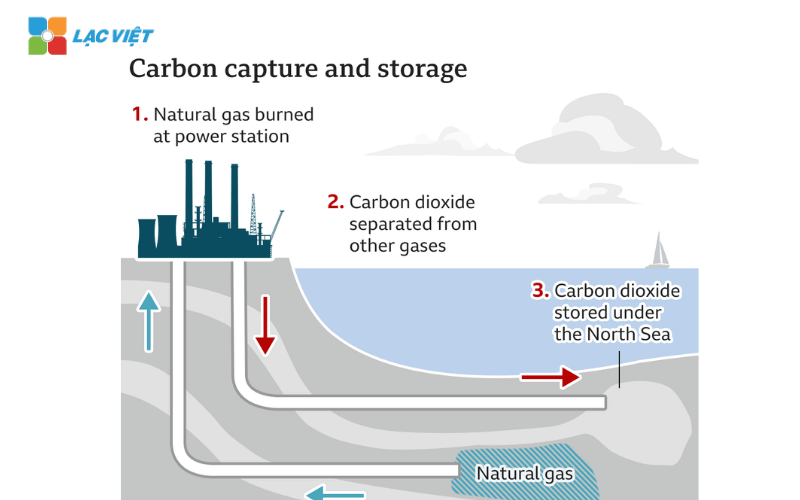
6.3. Building sustainable supply chain
- Cooperation with suppliers have committed to reducing emissions: Businesses need to choose for the supply of raw materials, components, policies for sustainable development committed to reducing emissions.
- Use recycled raw materials, economic development, circulation: transform from model manufacturing – consumer – waste into economic circulation, i.e. recycling – re-using raw materials to reduce the amount of waste arising.
- Optimized logistics and transportation: Use your vehicle, electrical car, running the hydrogen in cargo transportation alternative vehicles run on diesel. Applied optimization solution roadmap transportation by AI, helping to reduce distance move, save fuel, reduce emissions CO₂.
Actual deployment
- IKEA has converted the entire delivery trucks to electric vehicles to reduce emissions.
- DHL is committed to reducing 50% of the emissions of CO₂ in the year 2030 using aircraft biology and electric vehicles in the delivery.
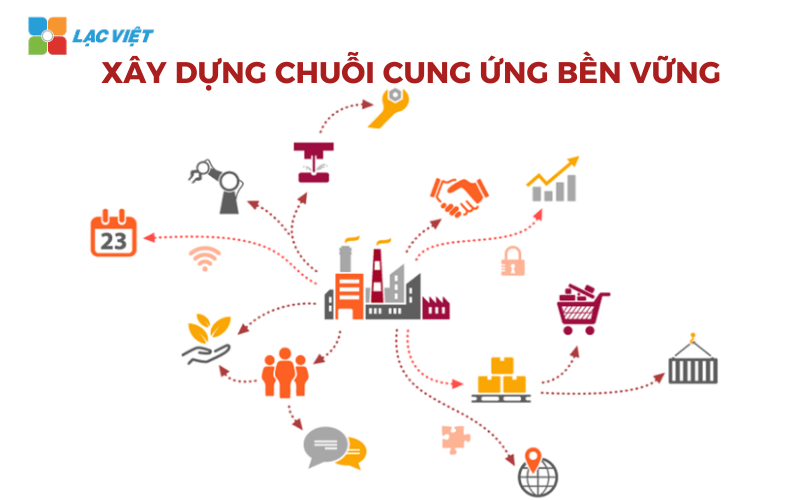
6.4. Offsetting carbon and market participants credits carbon
Investment in the project, forest protection, restoration ecology
- Business can offset emissions can not be reduced by funding for the project planted forest ecosystem restoration.
- A hectare of forest can absorb 10-15 tons of CO₂ each year, helping to offset the emissions cannot be cut completely.
- For example, Amazon has invested millions of DOLLARS into the project re-planted forests in Brazil and Indonesia.
Buying credits carbon from the project renewable energy
Businesses can participate in the market only carbon, where they buy credits from the clean energy project to offset the amount of CO₂ emission.
Some credit system carbon downloads:
- EU Emission Trading System (ETS) – trading system, emission largest in Europe.
- Verified Carbon Standard (VCS) – platform credits carbon is widely used global.
- Gold Standard (GS) – credits carbon for sustainable projects of high quality.
Implementation
- Microsoft has committed to be carbon neutral since 2012 and are investing heavily in capturing carbon buy credits carbon.
- Shell, BP has spent billions of DOLLARS to offset carbon through the regeneration project, the forest, clean energy.
Control, reduce greenhouse gas emissions is the key factor for enterprises to survive developed in the era of green. The global policy, such as adjustment mechanisms Border Carbon (CBAM) of the EU, the agreement Paris or the provisions Net Zero 2050're creating a race mandatory for the business wants to maintain its position in the international market.
The time has come for organizations to not only set a profit target but also towards for sustainable development, creating positive impact for the environment community. By starting to measure emissions, planning cut greenhouse gas emissions and implement a strategy to Net Zero help businesses create long-term value for yourself.




